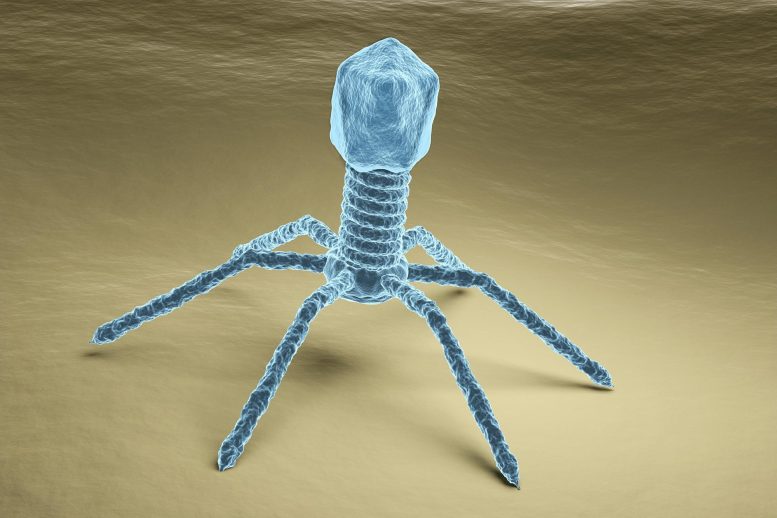
A new study suggests that a virus that preys on cholera bacteria has taken control of the bacteria’s immune system and is using it against the host. This is the first time it has been shown that a bacteriophage, commonly known as a “phage,” can acquire a fully functional adaptive immune system.
In a newly published study, researchers at Tufts University School of Medicine provide evidence that bacteriophage can acquire a functional and adaptive immune system, possibly opening the door for new phage therapies to treat bacterial diseases.
A study published today in the journal Nature reports that a viral predator of the cholera bacteria has stolen the functional immune system of bacteria and is using it against its bacterial host. The study provides the first evidence that this type of virus, the bacteriophage (“phage” for short), can acquire a wholly functional and adaptive immune system.
The phage used the stolen immune system to disable – and thus overcome – the cholera bacteria’s defense system against phages. Therefore, the phage can kill the cholera bacteria and multiply to produce more phage offspring, which can then kill more cholera bacteria. The study has dramatic implications for phage therapy, which is the use of phages to treat bacterial diseases. Developing phage therapy is particularly important because some bacteria, called superbugs, are resistant to most or all current antibiotics.
Until now, scientists thought phages existed only as primitive particles of DNA or RNA and therefore lacked the sophistication of an adaptive immune system, which is a system that can respond rapidly to a nearly infinite variety of new challenges. Phages are viruses that prey exclusively on bacteria and each phage is parasitically mated to a specific type of bacteria. This study focused on a phage that attacks Vibrio cholerae, the bacterium responsible for cholera epidemics in humans.
Howard Hughes Medical Institute investigator Andrew Camilli, Ph.D., of Tufts University School of Medicine led the research team responsible for the surprising discovery.
First author Kimberley D. Seed, Ph.D., a postdoctoral fellow in Camilli’s lab, was analyzing DNA sequences of phages taken from stool samples from patients with cholera in Bangladesh when she identified genes for a functional immune system previously found only in some bacteria (and most Archaea, a separate domain of single-celled microorganisms).
To verify the findings, the researchers used phage lacking the adaptive immune system to infect a new strain of cholera bacteria that is naturally resistant to the phage. The phage was unable to adapt to and kill the cholera strain. They next infected the same strain of cholera bacteria with phage harboring the immune system, and observed that the phage rapidly adapted and thus gained the ability to kill the cholera bacteria. This work demonstrates that the immune system harbored by the phage is fully functional and adaptive.
“Virtually all bacteria can be infected by phages. About half of the world’s known bacteria have this adaptive immune system, called CRISPR/Cas, which is used primarily to provide immunity against phages. Although this immune system was commandeered by the phage, its origin remains unknown because the cholera bacterium itself currently lacks this system. What is really remarkable is that the immune system is being used by the phage to adapt to and overcome the defense systems of the cholera bacteria. Finding a CRISPR/Cas system in a phage shows that there is gene flow between the phage and bacteria even for something as large and complex as the genes for an adaptive immune system,” said Seed.
“The study lends credence to the controversial idea that viruses are living creatures, and bolsters the possibility of using phage therapy to treat bacterial infections, especially those that are resistant to antibiotic treatment,” said Camilli, professor of Molecular Biology & Microbiology at Tufts University School of Medicine and member of the Molecular Microbiology program faculty at the Sackler School of Graduate Biomedical Sciences at Tufts University.
Camilli’s previous research established that phages are highly prevalent in stool samples from patients with cholera, implying that phage therapy is happening naturally and could be made more effective. In addition, a study published by Camilli in 2008 determined that phage therapy works in a mouse model of cholera intestinal infection.
The team is currently working on a study to understand precisely how the phage immune system disables the defense systems of the cholera bacteria. This new knowledge will be important for understanding whether the phage’s immune system could overcome newly acquired or evolved phage defense systems of the cholera bacteria, and thus has implications for designing an effective and stable phage therapy to combat cholera.
Reference: “A bacteriophage encodes its own CRISPR/Cas adaptive response to evade host innate immunity” by Kimberley D. Seed, David W. Lazinski, Stephen B. Calderwood and Andrew Camilli, 27 February 2013, Nature.
DOI: 10.1038/nature11927
Additional authors are David W. Lazinski, Ph.D., senior research associate in the Camilli lab at Tufts University School of Medicine, and Stephen B. Calderwood, M.D., Morton N. Swartz, M.D. academy professor of medicine at Harvard Medical School, and chief, division of infectious disease and vice-chair, department of medicine at Massachusetts General Hospital.
Research reported in this publication was supported by the National Institute of Allergies and Infectious Diseases of the National Institutes of Health under award numbers R01AI55058, R01AI045746, and R01AI058935


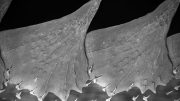

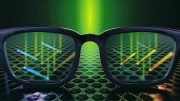
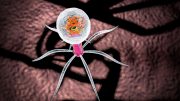
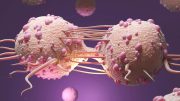


Bacteriophages or other viruses like corona virus , Tobacco Mosaic Virus etc have distinct coats put on by them to protect their simple DNA or RNA code in order to facilitate infiltration in the victim`s cell. Here itself its immune working has started, first to enter and now this rticle states that they also learn the Bacteria’s defense mechanism and reshape their coat to thwart them and survive. I am set to think that this infinitesimal bit of knowledge is there even in this type of existence which is neither chemistry nor biology. Where does this atomization of knowledge come from to survive and adapt to the surroundings ? Probably knowledge is the fifth dimension to matter and time and which abounds the universe and it is not perceivable to the electro magnetic, gravitational or nuclear forces which we commonly measure in physics in the physical world. It is almost like Dark Matter and Dark Energy of the cosmos which occupies 96% of its volume with material universe accounting just 4% of it. Knowledge can be disseminated, dissipated, and regrouped among atoms on formation. Higher the molecular weight, higher will be its contents embedded in it. For a super big protein molecule like MAN, this knowledge is organised, branched and co-ordinated in its cell through the genetic molecules of DNA and even Chaporone proteins and epigenics inside the cell and other cell organelles. ‘I can see farther because, I am seeing on the giant shoulders of my predecessors ‘- thus spoke Sir Isaac Newton.
It is true. We have found only small pebbles here and there on the sea shore and the whole sea of truth has got to be seen later little by little. Imperceivable cannot be termed as non-existing, just like our Dark Matter and Dark Energy, whose existence is so true and still we grope in the dark. Thank You.
Bacteriophages or other viruses like corona virus , Tobacco Mosaic Virus etc have distinct coats put on by them to protect their simple DNA or RNA code in order to facilitate infiltration in the victim`s cell. Here itself its immune working has started, first to enter and now this rticle states that they also learn the Bacteria’s defense mechanism and reshape their coat to thwart them and survive. I am set to think that this infinitesimal bit of knowledge is there even in this type of existence which is neither chemistry nor biology. Where does this atomization of knowledge come from to survive and adapt to the surroundings ? Probably knowledge is the fifth dimension to matter and time and which abounds the universe and it is not perceivable to the electro magnetic, gravitational or nuclear forces which we commonly measure in physics in the physical world. It is almost like Dark Matter and Dark Energy of the cosmos which occupies 96% of its volume with material universe accounting just 4% of it. Knowledge can be disseminated, dissipated, and regrouped among atoms on formation. Higher the molecular weight, higher will be its contents embedded in it. For a super big protein molecule like MAN, this knowledge is organised, branched and co-ordinated in its cell through the genetic molecules of DNA and even Chaporone proteins and epigenics inside the cell and other cell organelles. ‘I can see farther because, I am seeing on the giant shoulders of my predecessors ‘- thus spoke Sir Isaac Newton. It is true. We have found only small pebbles here and there on the sea shore and the whole sea of truth has got to be seen later little by little. Imperceivable cannot be termed as non-existing, just like our Dark Matter and Dark Energy, whose existence is so true and still we grope in the dark. Thank You.